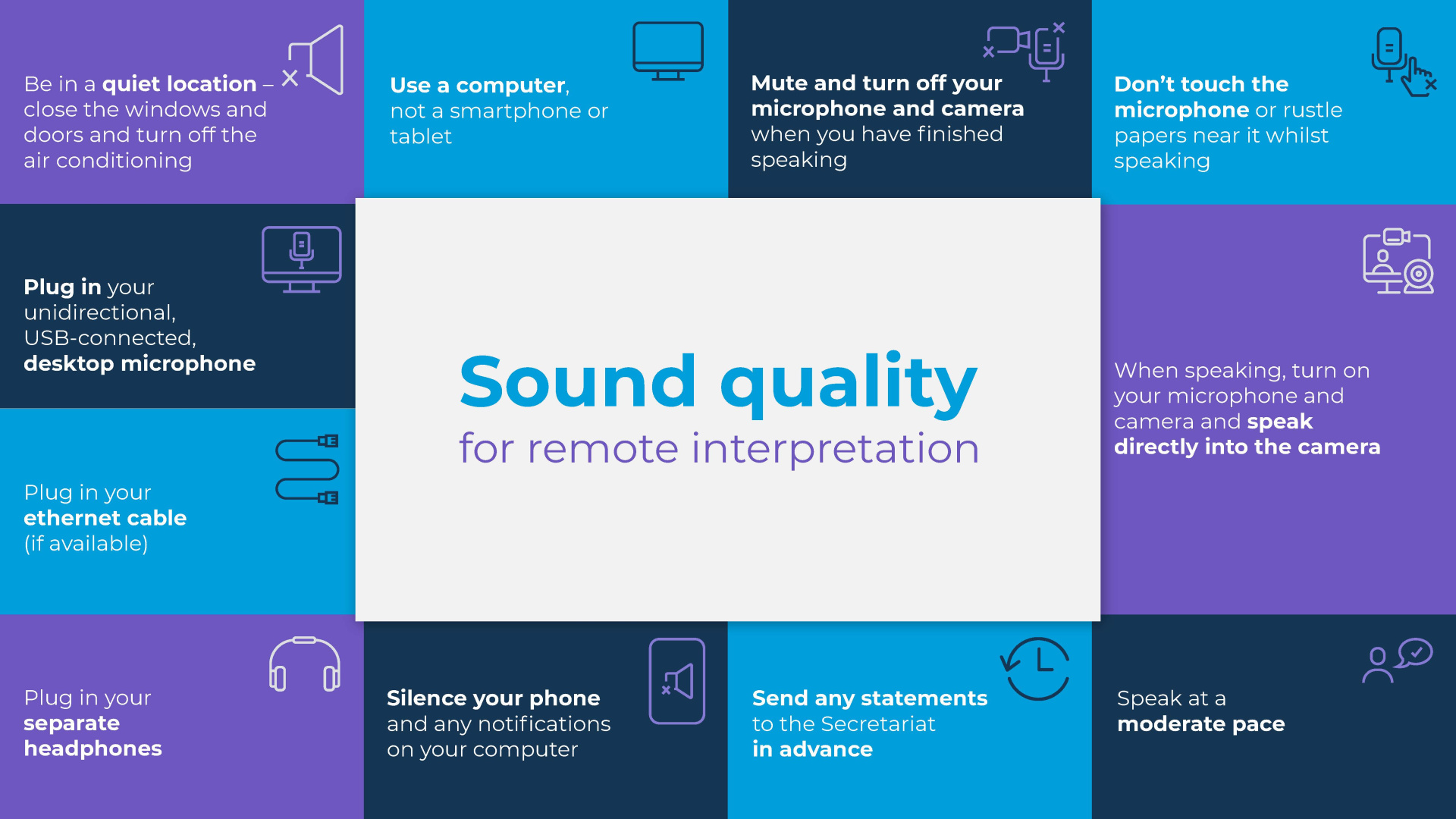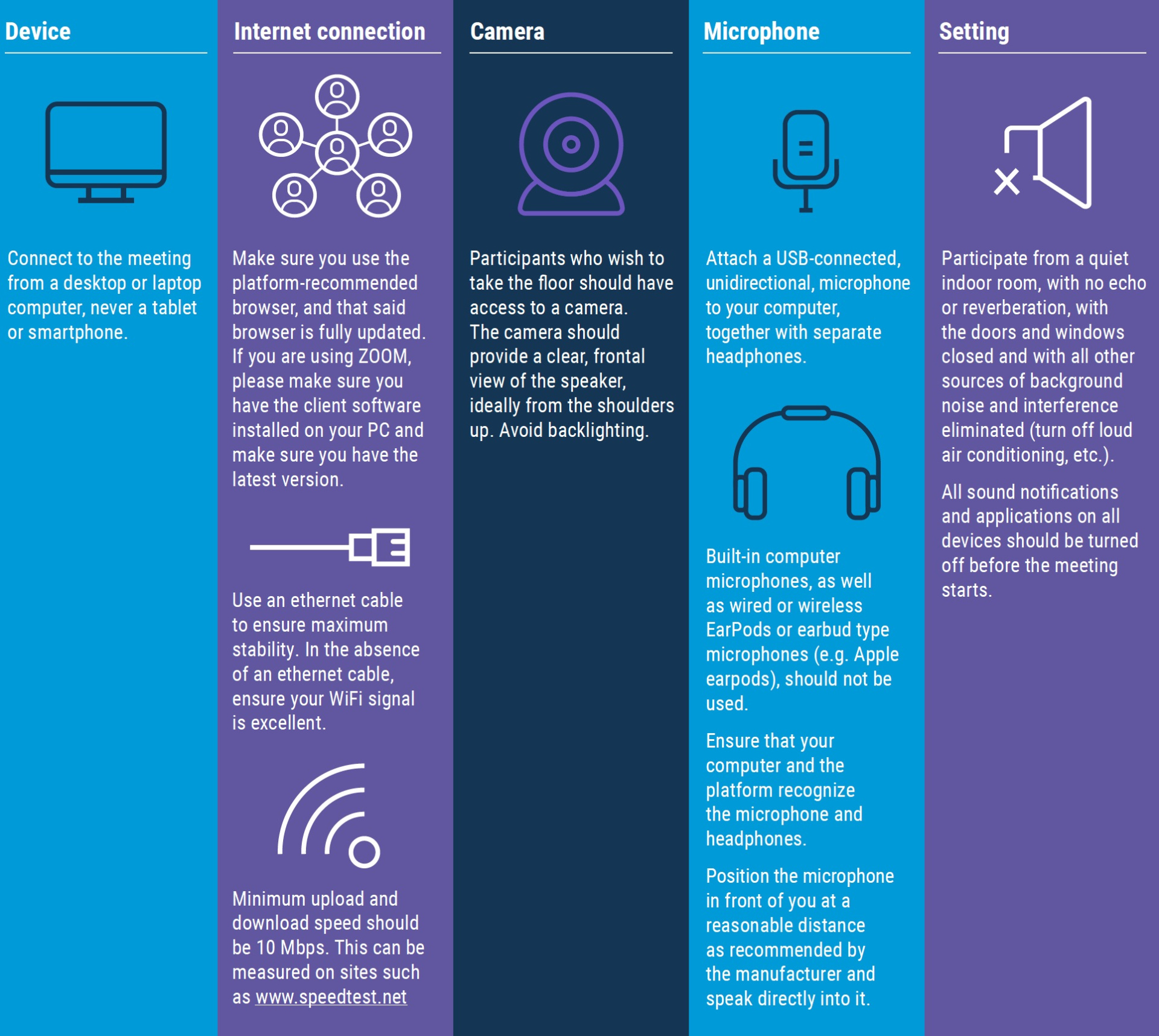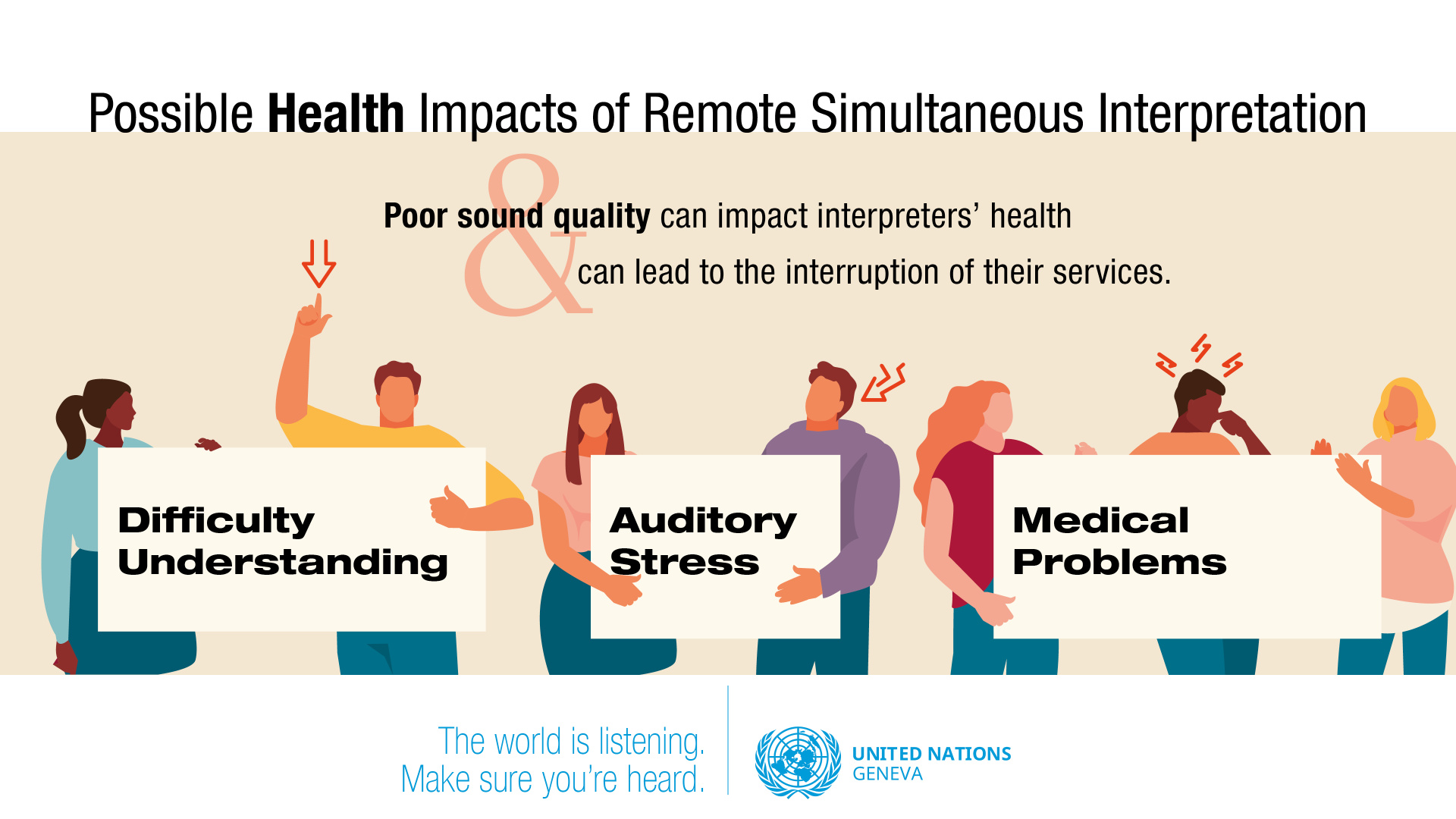
Breadcrumb
Videos
This series of short video tutorials can help you choose the right tools and environment to deliver your message effectively and can help our interpreters better hear and interpret your words. For more written guidance on ensuring quality sound, consult this page on best practices.
Ensure a strong internet connection
Choosing the right device
Choosing the right setting
Why we don't recommend earphones with built-in microphones
Recommended microphones
Why we don't recommend built-in computer microphones
Why we don't recommend wireless microphones
Helpful tips to remember during your meeting
How to improve your on-screen image
Why silence your notifications?
Dos & Don'ts for VC-equipped rooms



